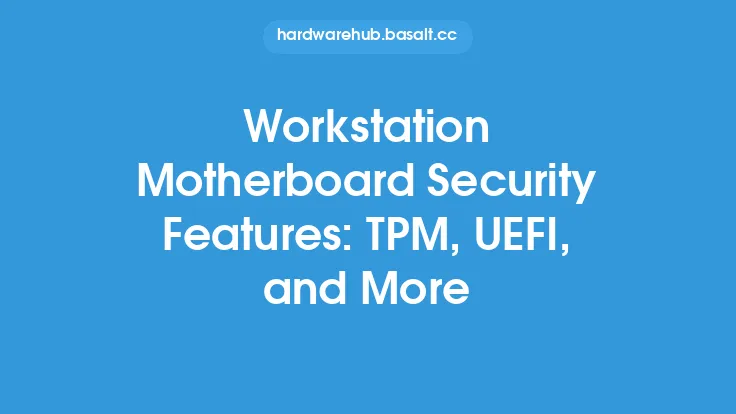When it comes to workstations, the motherboard is the foundation upon which the entire system is built. A workstation motherboard is designed to provide a high level of performance, reliability, and scalability, making it an essential component for professionals who require a powerful and efficient system. In this article, we will delve into the features of workstation motherboards that enhance productivity, exploring the various components and technologies that make these motherboards ideal for demanding applications.
Introduction to Workstation Motherboard Features
Workstation motherboards are designed to support multiple processors, large amounts of memory, and numerous expansion slots, making them well-suited for applications such as video editing, 3D modeling, and software development. These motherboards often feature high-end chipsets, which provide a high level of performance and scalability. Some of the key features of workstation motherboards include multi-socket support, allowing for multiple processors to be installed, and large memory capacities, often supporting up to 1TB or more of RAM.
CPU and Memory Support
One of the most critical features of a workstation motherboard is its CPU and memory support. Workstation motherboards often support multiple CPU sockets, allowing for the installation of multiple processors. This provides a significant boost in processing power, making it ideal for applications that require intense computational power. Additionally, workstation motherboards often support large amounts of memory, with some models supporting up to 1TB or more of RAM. This provides ample memory for running multiple applications simultaneously, reducing the need for paging and improving overall system performance.
Expansion and Connectivity Options
Workstation motherboards also provide a wide range of expansion and connectivity options, making it easy to add peripherals and devices as needed. These motherboards often feature multiple PCIe slots, allowing for the installation of high-end graphics cards, RAID controllers, and other expansion cards. Additionally, workstation motherboards often include multiple USB ports, SATA ports, and other connectivity options, making it easy to connect external devices and storage systems.
Storage and RAID Support
Storage and RAID support are also critical features of workstation motherboards. These motherboards often include multiple SATA ports, allowing for the connection of multiple storage devices. Additionally, many workstation motherboards support RAID configurations, providing a high level of data redundancy and protection. Some workstation motherboards also support more advanced storage technologies, such as NVMe and SAS, providing high-speed storage options for demanding applications.
Power Supply and Cooling Systems
A reliable power supply and cooling system are also essential components of a workstation motherboard. These motherboards often require high-wattage power supplies to support the power-hungry components, such as multiple processors and high-end graphics cards. Additionally, workstation motherboards often include advanced cooling systems, such as liquid cooling and heat sinks, to keep the system running at a safe temperature. This provides a high level of reliability and reduces the risk of system downtime due to overheating.
Reliability and Durability
Reliability and durability are also critical considerations when it comes to workstation motherboards. These motherboards are designed to provide a high level of uptime and reliability, making them ideal for mission-critical applications. Workstation motherboards often feature high-quality components, such as solid capacitors and high-quality PCBs, to provide a high level of durability and reliability. Additionally, many workstation motherboards include advanced features, such as redundant power supplies and fans, to provide a high level of fault tolerance and reliability.
Management and Monitoring Features
Finally, workstation motherboards often include advanced management and monitoring features, making it easy to monitor and manage the system. These motherboards often include features such as IPMI (Intelligent Platform Management Interface) and BMC (Baseboard Management Controller), providing a high level of monitoring and control. Additionally, many workstation motherboards include advanced software tools, such as system management software and monitoring utilities, to provide a high level of visibility and control over the system.
Conclusion
In conclusion, workstation motherboards are designed to provide a high level of performance, reliability, and scalability, making them ideal for demanding applications. The features of workstation motherboards, such as multi-socket support, large memory capacities, and advanced expansion and connectivity options, provide a high level of productivity and efficiency. By understanding the features and technologies that make up a workstation motherboard, professionals can make informed decisions when selecting a motherboard for their workstation, ensuring that they get the performance and reliability they need to stay productive.





